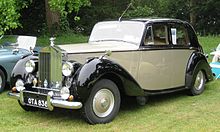
Jaguar is the sports car and luxury vehicle brand of Jaguar Land Rover, a British multinational car manufacturer with its headquarters in Whitley, Coventry, England. Jaguar Cars was the company that was responsible for the production of Jaguar cars until its operations were fully merged with those of Land Rover to form Jaguar Land Rover on 1 January 2013.

MG is a British automotive marque founded by Cecil Kimber in the 1920s, and M.G. Car Company Limited was the British sports car manufacturer that made the marque famous. Best known for its open two-seater sports cars, MG also produced saloons and coupés, with engines up to three litres in size and 3.5 L in the case of the MGB GT V8. The marque is now owned by Chinese state-owned automaker SAIC Motor Corporation Limited.
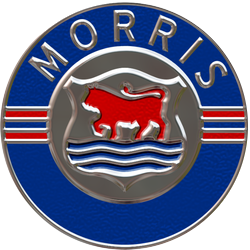
Morris Motors Limited was a British privately owned motor vehicle manufacturing company formed in 1919 to take over the assets of William Morris's WRM Motors Limited and continue production of the same vehicles. By 1926 its production represented 42 per cent of British car manufacture—a remarkable expansion rate attributed to William Morris's practice of buying in major as well as minor components and assembling them in his own factory. Largely self-financed through his enormous profits, Morris did borrow some money from the public in 1926, and later shared some of Morris Motors' ownership with the public in 1936. The new capital was then used by Morris Motors to buy many of his other privately held businesses.
The automotive industry in the United Kingdom is now best known for premium and sports car marques including Aston Martin, Bentley, Caterham Cars, Daimler, Jaguar, Lagonda, Land Rover, Lister Cars, Lotus, MG, McLaren, Mini, MOKE, Morgan, Rolls-Royce and TVR. Volume car manufacturers with a major presence in the UK include Nissan, Toyota, BMW, and Vauxhall Motors. Commercial vehicle manufacturers active in the UK include Alexander Dennis, Dennis Eagle, IBC Vehicles, Leyland Trucks, TEVVA and London Electric Vehicle Company.

The Rover Company Limited was a British car manufacturing company that operated from its base in Solihull in Warwickshire. Its lasting reputation for quality and performance was such that its first postwar model reviewed by Road & Track in 1952 was pronounced finer than any but a Rolls-Royce. Rover also manufactured the Land Rover series from 1948 onwards, which spawned the Range Rover in 1970, and went on to become its most successful and profitable product — with Land Rover eventually becoming a separate company and brand in its own right.
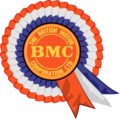
The British Motor Corporation Limited (BMC) was a UK-based vehicle manufacturer, formed in early 1952 to give effect to an agreed merger of the Morris and Austin businesses.

The Austin Motor Company Limited was an English manufacturer of motor vehicles, founded in 1905 by Herbert Austin in Longbridge. In 1952 it was merged with Morris Motors Limited in the new holding company British Motor Corporation (BMC) Limited, keeping its separate identity. The marque Austin was used until 1987 by BMC's successors British Leyland and Rover Group. The trademark is currently owned by the Chinese firm SAIC Motor, after being transferred from bankrupt subsidiary Nanjing Automotive which had acquired it with MG Rover Group in July 2005.

British Leyland was an automotive engineering and manufacturing conglomerate formed in the United Kingdom in 1968 as British Leyland Motor Corporation Ltd (BLMC), following the merger of Leyland Motors and British Motor Holdings. It was partly nationalised in 1975, when the UK government created a holding company called British Leyland, later renamed BL in 1978. It incorporated much of the British-owned motor vehicle industry, which in 1968 had a 40% share of the UK car market, with its history going back to 1895. Despite containing profitable marques such as Jaguar, Rover, and Land Rover, as well as the best-selling Mini, BLMC had a troubled history, leading to its eventual collapse in 1975 and subsequent part-nationalisation.
British Motor Holdings Limited (BMH) was a British vehicle manufacturing company known until 14 December 1966 as British Motor Corporation Limited (BMC). BMH was created as a holding company following BMC's takeover of both Jaguar Cars and the Pressed Steel Company in that year.

Leyland Motors Limited was an English vehicle manufacturer of lorries, buses and trolleybuses. The company diversified into car manufacturing with its acquisitions of Triumph and Rover in 1960 and 1967, respectively. It gave its name to the British Leyland Motor Corporation, formed when it merged with British Motor Holdings in 1968, to become British Leyland after being nationalised. British Leyland later changed its name to simply BL, then in 1986 to Rover Group.

The Triumph Acclaim is a front-wheel drive compact family saloon/sedan manufactured by British Leyland (BL) from 1981 to 1984. It is a locally built version of the Honda Ballade. It was the final vehicle marketed under the Triumph marque, and the first product of the alliance between BL and Honda which would last until the mid 1990s.

Cowley is a residential and industrial area in Oxford, in the county of Oxfordshire, England. Cowley's neighbours are Rose Hill and Blackbird Leys to the south, Headington to the north and the villages of Horspath and Garsington across fields to the east. Internationally, Cowley is best known for its automotive industry - historically it was the home of the car manufacturer Morris, which has now evolved into Mini.

Nuffield Organization was the unincorporated umbrella-name or promotional name used for the charitable and commercial interests of owner and donor, William Morris, 1st Viscount Nuffield. The name was assumed following Nuffield's gift made to form his Nuffield Foundation in 1943, it linked his business interests to his existing very generous philanthropy. The same enterprises had previously been referred to as the Morris Organizations and at first described itself as The Nuffield Organization, A Cornerstone of Britain's Industrial Structure.
The Morris Isis name was first briefly used by Morris Motors Limited on a 6-cylinder car made from 1929 until 1931. It was resurrected on a new 6-cylinder midsize car from the British Motor Corporation in the 1950s to replace the Morris Six MS.

Morris Commercial Cars Limited is a British manufacturer of commercial vehicles formed by William Morris, founder of Morris Motors Limited, to continue the business of E G Wrigley and Company which he purchased as of 1 January 1924.
British Motor Corporation (Australia) was a motor manufacturing company formed in Australia in 1954 by the merger of the Austin Motor Company (Australia) and Nuffield (Australia). This followed the merger in 1952 of the Austin Motor Company and the Nuffield Group in the United Kingdom to form the British Motor Corporation. Following further corporate changes in the UK in the late 1960s, BMC Australia was absorbed into the newly established British Leyland Motor Corporation of Australia, the name of which became Leyland Motor Corporation of Australia in 1972, and then JRA Limited in March 1983.

Nuffield Press was a publisher and printer formed by William Morris as part of his Nuffield Organization in 1925. It was formed to primarily produce promotional literature for the motor vehicle manufacturing divisions of the organization, and later expanded to printing of all types including owner's manuals, technical manuals, magazines, diaries, and posters.
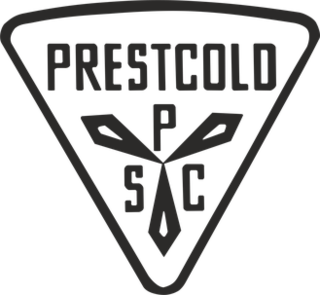
Prestcold was a British refrigerator manufacturer, established by the Pressed Steel Co. Ltd of Oxford in 1934. It manufactured both domestic and commercial refrigeration equipment. Through its history, it was closely related to automotive manufacturing, particularly that of Morris Motors and successor British Leyland. Refrigerators were originally produced alongside car bodies at the Pressed Steel facility built for Morris, adjacent to the Morris factory.

Plant Oxford located in Cowley, southeast Oxford, England, is a BMW car assembly facility where Mini cars are built. The plant forms the Mini production triangle along with Plant Hams Hall where engines are manufactured and Plant Swindon where body pressings and sub-assemblies are built.
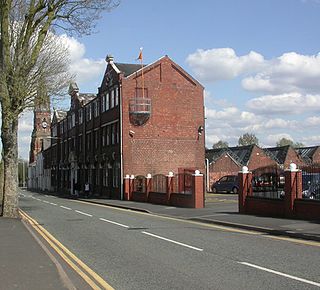
Sunbeam Commercial Vehicles was a commercial vehicle manufacturing offshoot of the Wolverhampton based Sunbeam Motor Car Company when it was a subsidiary of S T D Motors Limited. Sunbeam had always made ambulances on modified Sunbeam car chassis. S T D Motors chose to enter the large commercial vehicle market in the late 1920s, and once established they made petrol and diesel buses and electrically powered trolleybuses and milk floats. Commercial Vehicles became a separate department of Sunbeam in 1931.




